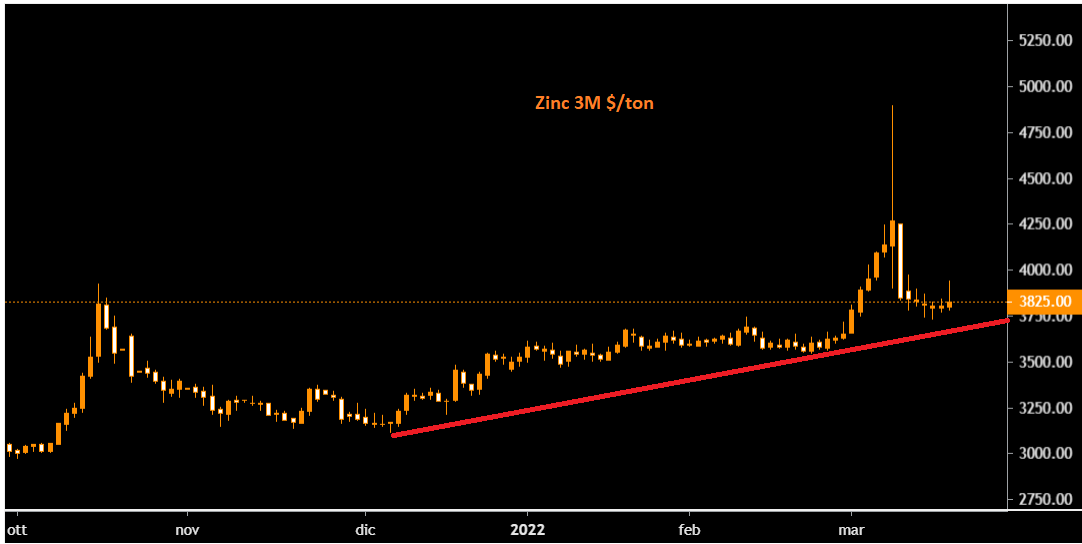Zinc prices surpassed $4,000 per tonne, reaching a 15-year high last week ($4,861/mt on 8 March 2022), as rising energy costs and supply concerns boosted the metal’s market.
Zinc production requires the smelting of zinc ore, which is energy intensive. As a result, rising global energy costs over the past year have reduced zinc operations as producers limit capacity.
Nyrstars, one of the world’s largest zinc producers, has cut production by up to 50% at three of its European smelters from October 2021 due to rising energy prices.
Despite cutting zinc production in Europe in the fourth quarter of last year, production of the refined metal in Europe and worldwide increased marginally in 2021.
According to data from industry body International Lead and Zinc Study Group (ILZSG), published in February, global refined zinc production in 2021 increased to 13.85 million tonnes, 0.6% higher than the 13.77 million tonnes in 2020.
Production in Europe increased by 0.1% year-on-year (YoY) to 2.48 million tonnes in 2021.
Meanwhile, lower production in Brazil, Canada, South Korea and Namibia was offset by higher production in China, India, Japan, Kazakhstan, Peru and the United States.
China is the world’s largest zinc producer, with its production of refined zinc increasing by 1% to 6.41 million tonnes in 2021, accounting for 46% of global production.
ILZSG expects refined zinc supply to increase to 14.45 million tonnes in 2022, up 2.3% from 2021.
Rising consumption has driven the zinc market into deficit in 2021. After the relaxation of Covid-19 restrictions and the reopening of the global economy in 2021, zinc consumption increased proportionally. According to the Zinc Association, 60% of global zinc supply is used in the continuous hot dip galvanising process in the steel industry.
Galvanised steel products are widely used in the construction and automotive sectors. Demand for refined zinc increased to 14.04 million tonnes in all regions in 2021, up 5.8% year-on-year.
South Korea’s consumption jumped 15.5% y-o-y to 518,000 tonnes in 2021. Japan’s consumption grew by 13% to 432,000 tonnes, while demand in India increased by 12.1% to 619,000 tonnes.
In Europe, zinc consumption increased by 8.5% y-o-y to 2.4 million tonnes, while the US consumed 916,000 tonnes, up 5.8%. Demand in China grew by 1.5% to 6.8 million tonnes.
As a result, zinc demand exceeded supply in 2021, and the market was in deficit by 192,000 tonnes. This was in contrast to the surplus of 503,000 tonnes in 2020.
Given the 2021 deficit and the continued operational challenge of high energy costs in 2022, this could support the zinc price. ILZSG expects demand for refined zinc to increase to 14.41 million tonnes in 2022, up 2.3% from 2021.
According to some financial institutions, average zinc prices could fall towards $3,300 per tonne in the first quarter, but if the energy outlook in Europe worsens, zinc could see spikes to over $3,800 per tonne.
According to Deutsche Industriebank AG, zinc prices will be around $3,300 a tonne by the end of the first quarter, with a fluctuation range of $500.
According to Commodity Evolution’s research office, zinc prices by the end of March could reach the first supports in the area of $3,670/mt (a decrease of about 3.70% compared to current prices of $3812/mt).
.gif) Loading
Loading


